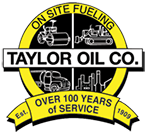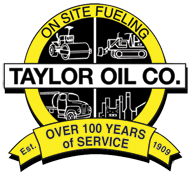Underground Storage Tanks: What Are the Risks? – Leaks or spills from petroleum product underground storage tanks (USTs) are bad news. They contaminate soil and groundwater, making their way to neighboring properties or surface waters. In addition, they can result in third-party injuries and property damage – not to mention natural resource damage claims.
Owners and operators of USTs must comply with regulations, of course. But they should also maintain their tanks and manage finances in an effort to protect themselves against expensive environmental claims, cleanups, and tank removal costs.
There are many factors that will affect the risk of a release. Those factors include tank age, tank construction, tank monitoring and maintenance effectiveness, and leak detection type.
Spills often occur during delivery of oil or gas into a storage tank, when the hose is connected to the fill pipe and the product is being pumped into the tank. When someone leaves the oil in the hose after disconnection or when there has been an improper hose connection in the first place, spills can occur. They can also happen with an overfilled tank.
Leaks are another risk. They most often happen underneath the dispenser island, the spill bucket, submersible pumps, and along piping. Corrosion can occur in metal USTs, creating holes and leakage of the oil. Corrosion and installation issues are extremely expensive.
Tank age is another big risk factor. Leaks are more likely to occur the longer storage tank systems have been in use.
Financial Implications
UST regulations demand that petroleum UST owners take full financial responsibility. The EPA says the most common financial assurance mechanisms include state funds and private insurance. Pollution liability insurance can protect against legal defense costs.
A storage tank policy may be put in place to cover losses associated with UST systems, such as with a leak from the tank or piping, a leak that has seeped into a nearby property, natural resource damage, spills arising during loading and unloading, and costs of responding to contamination emergencies that threaten human health or the environment.
A storage tank policy won’t cover the costs associated with removing or replacing a tank, or waste material disposal. It also won’t cover costs of tanks not listed on the policy, or expenses related to leaks from other sources, such as oil/water separators, hydraulic lifts, and more.
To cover those risks, UST owners may want to take out a premises pollution liability insurance policy whereby each UST must be individually itemized.
Insurance Policies
Insurance policies must feature the following provisions:
- Separate defense limits with first dollar coverage
- Cover sudden and non-sudden releases alike
- Cover releases from unloading and loading
- Six-month extended reporting period in regards to claims-made coverage
- Required wording on the endorsement or certificate of insurance, as per the Code of Federal Regulations, 40 CFR 280.97(b)(1) and (2)
- On-site and off-site cleanup as well as third-party claims for bodily injury and property damage
Aging Tanks
Underground tanks should last 30 years. After that, old tanks are a risk that as the owner, you must address. The longer you wait, the higher the chances of a leak.
There are many financial barriers for tank owners to avoid insuring aging tanks. They offer tank pollution liability coverage with larger deductibles and higher minimum premiums. Most carriers don’t want to offer lower deductibles for aging USTs because there is more of a chance that they would have to pay extensive cleanup costs after a spill or leak. The cost to insure tanks increases with their age, characterized by a sharp increase in the premium curve at the 30-year mark.
For older tanks, it’s advisable to explore other measures beyond insurance, such as removal, closing in place, or replacement to above-ground tanks.
Removal, Replacement, Remediation
There are several reasons to take a UST out of service, such as a release, business closure or the tank’s age. Sometimes USTs are simply no longer needed for their original intended use.
UST removal includes:
- Excavation
- Transportation
- Disposal
- Restoring ground surface to original form
The cost to do this ranges from $15,000 to $20,000 for a one tank – and that’s only if the tank is in good condition and has no leaks. In the case of leaks, the EPA says cleanup costs could range from $10,000 for a leak with a small area of contaminated soil, to more than $1 million for leaks that have contaminated groundwater. Furthermore, the average cost of a cleanup can reach $130,000.
How to Prepare
More than half of the 415,000 USTs in current service have reached more than 25 years of age. As a system nears 30 years in age, owners must consider replacing the entire system. After removal, a new system should be installed, except in the case of business closure or if ASTs will be used instead.
Costs can get up to $300,000 in the case of replacing three 10,000-gallon USTs (including new tanks, piping, dispensers and testing). The process may take many weeks to complete.
This high cost is something many owners aren’t prepared to deal with. That’s why you should start planning for tank replacement from day one. For example, if you have a UST system valued at $300,000, you should be setting aside $22,100 a year for the tank’s future replacement. This number doesn’t include business income lost during replacement, upgrades, maintenance or repairs that must occur over the lifetime of a typical UST. As a facility owner, it’s wise to plan for these costs starting on the day of initial installation so you don’t get surprised later.
It’s best to replace your tanks when they are between 20 and 30 years old. This will reduce the likelihood of a leak or spill.
Contact Taylor Oil
If you’re in need of fuel storage tanks that are safe and reliable, contact us at Taylor Oil. We offer 24/7 onsite equipment fueling.


